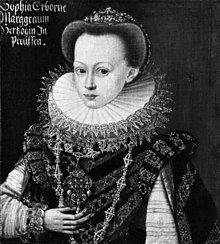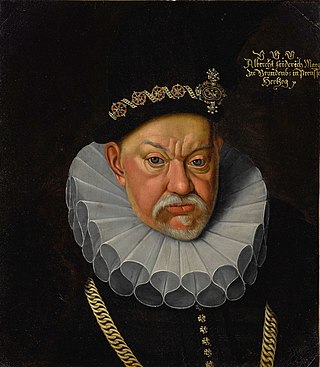
Albert Frederick was the Duke of Prussia, from 1568 until his death. He was a son of Albert of Prussia and Anna Marie of Brunswick-Lüneburg. He was the second and last Prussian duke of the Ansbach branch of the Hohenzollern family.

The Duchy of Courland and Semigallia was a duchy in the Baltic region, then known as Livonia, that existed from 1561 to 1569 as a nominally vassal state of the Grand Duchy of Lithuania and subsequently made part of the Crown of the Polish Kingdom from 1569 to 1726 and incorporated into the Polish–Lithuanian Commonwealth in 1726. On October 24, 1795, it was annexed by the Russian Empire in the Third Partition of Poland.

Gotthard Kettler, Duke of Courland was the last Master of the Livonian Order from 1559 to 1561 and the first Duke of Courland and Semigallia from 1561 to 1587.

Jacob Kettler was Duke of Courland and Semigallia from 1642 to 1682. Under his rule, Courland and Semigallia became more independent of its Polish suzerain, reached its peak in wealth, and even engaged in its own overseas colonization, making it one of the smallest, but fastest growing states in the world at that time.
Kettler is a surname of Germanic origins, particularly in Germany and Austria. Notable people with the surname include:

Albrecht VII, the Handsome, Duke of Mecklenburg in Güstrow, was a minor ruler in North Germany of the 16th century. He also asserted claims to Scandinavian thrones based on the royal lineage of the House of Mecklenburg.

Wilhelm Kettler was the Duke of Courland, a Baltic German region in today's Latvia. Wilhelm ruled the western Courland portion of the Duchy of Courland and Semigallia, while his brother Friedrich ruled the eastern Semigallia portion.

Friedrich Kettler was Duke of Courland and Semigallia from 1587 to 1642.
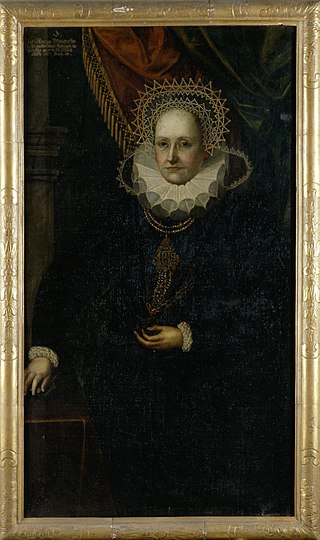
Duchess Marie Eleonore of Cleves was the Duchess of Prussia by marriage to Albert Frederick, Duke of Prussia. She was the eldest child of William, Duke of Jülich-Cleves-Berg and Maria of Austria.

Grobiņa Castle is a medieval castle located in the town of Grobiņa, in South Kurzeme Municipality in the Courland region of Latvia. The ancient Curonian castle hill is located only 100 m from the castle. It is supposed to be the famous Seeburg, which is mentioned in Scandinavian sources as early as the 9th century.

Frederick William was Duke of Courland and Semigallia from 1698 to 1711. Frederick Wilhelm was the son of Friedrich Kasimir Kettler, Duke of Courland and Semigallia and Princess Elisabeth Sophie of Brandenburg. During his reign the duchy was occupied by Swedish and later by Russian troops.
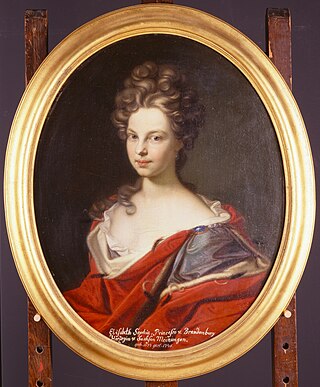
Elisabeth Sophie of Brandenburg, was a Duchess consort of Courland by marriage to Duke Frederick Casimir Kettler of Courland, a Margravine consort of Brandenburg-Bayreuth by marriage to Christian Ernst, Margrave of Brandenburg-Bayreuth, and a Duchess consort of Saxe-Meiningen by marriage to Ernst Ludwig I, Duke of Saxe-Meiningen. She was joint regent in Courland during the minority of her son Frederick William, Duke of Courland from 1698 until 1701.

Frederick Casimir Kettler was Duke of Courland and Semigallia from 1682 to 1698. Frederick Casimir was the son of Jacob Kettler and Louise Charlotte of Brandenburg. In his reign the Duchy lost its geopolitical position and became Sweden, Prussia and Russia's territorial subject of interests.

Anna of Mecklenburg, was the duchess consort of Courland by marriage to Gotthard Kettler. She was the daughter of Albrecht VII, Duke of Mecklenburg and Anna of Brandenburg. Anna is the first woman in Livonia whose life story is entirely historically confirmed.

Elisabeth Magdalena of Pomerania, was a Duchess consort of Courland by marriage to Friedrich Kettler.

Princess Maria Amalia of Courland was a Landgravine of Hesse-Kassel by her marriage to Charles I, Landgrave of Hesse-Kassel. She was a daughter of Jacob Kettler, Duke of Courland and Semigallia and Margravine Louise Charlotte of Brandenburg. Her eldest son was King Frederick I of Sweden. One of her daughters was the most recent common ancestor of all the currently reigning monarchs of Europe from 1939 to 1941 and 1943 to 2022.

Anna of Brandenburg was the duchess consort of Mecklenburg from 1524 to 1567.
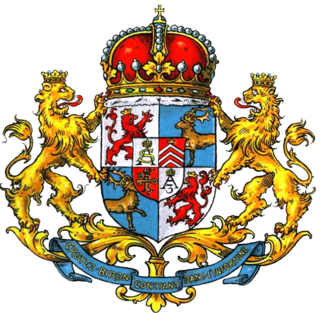
The House of Biron is the name of the Baltic German aristocratic family which was the ruling family of the Duchy of Courland and Semigallia. The family also enjoyed privileges and influence during the times of the Polish–Lithuanian Commonwealth and in the Russian Empire.

The District of Pilten was an autonomous district of the Polish–Lithuanian Commonwealth and also in union with the Duchy of Courland and Semigallia.
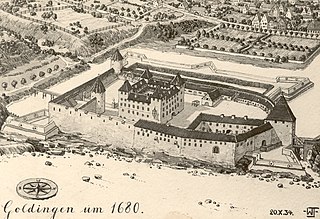
Kuldīga Castle also Goldingen Castle and Jesus Castle was a medieval castle of the Livonian Order in historical Courland in town Kuldīga near Venta Rapid. Today on the left bank of the Venta at the end of the old bridge one can find the former castle mill, a castle guard's house and a city park with the castle ruins on Rumba Hill.
